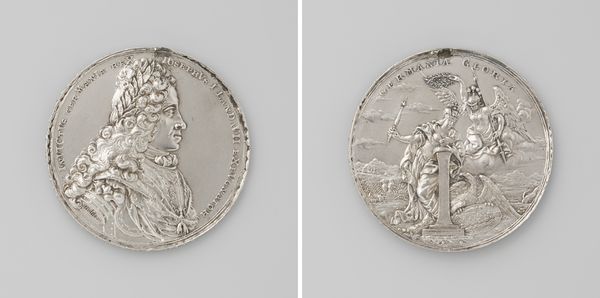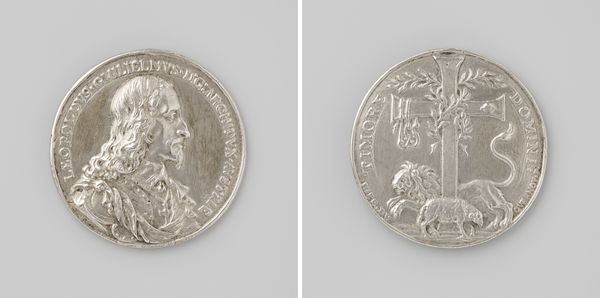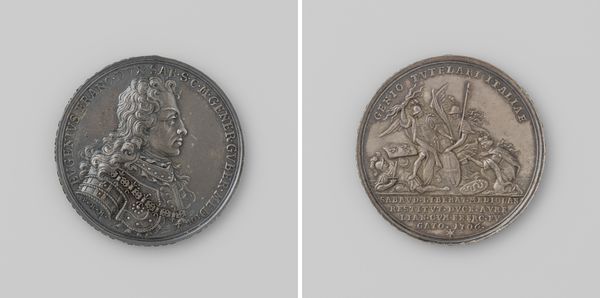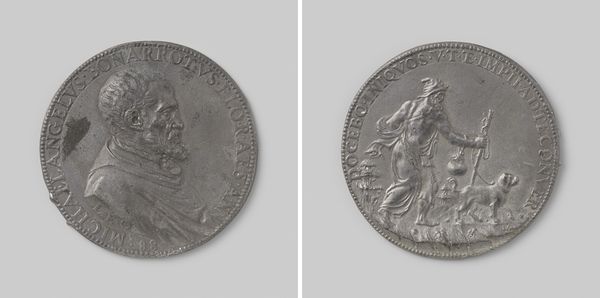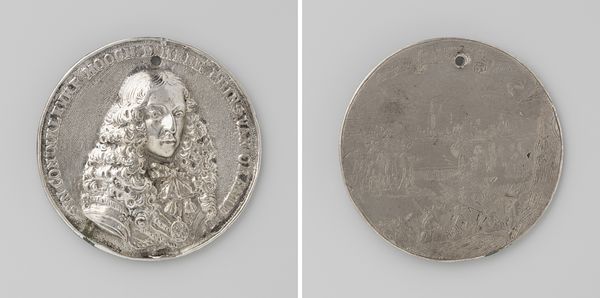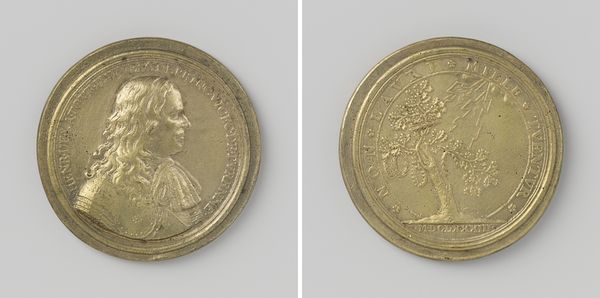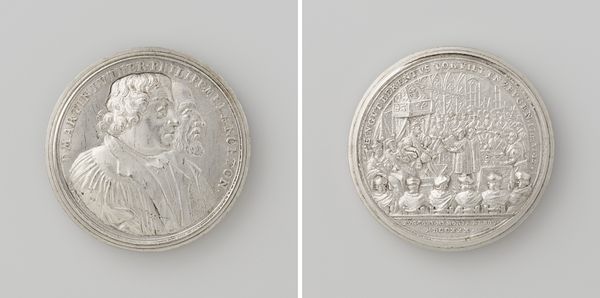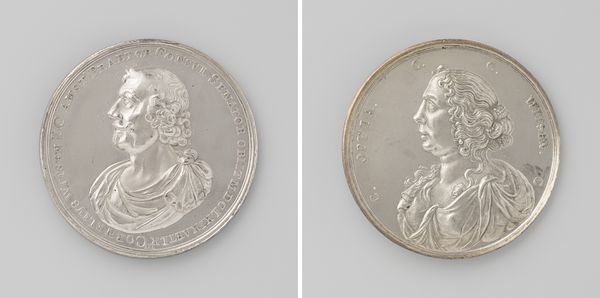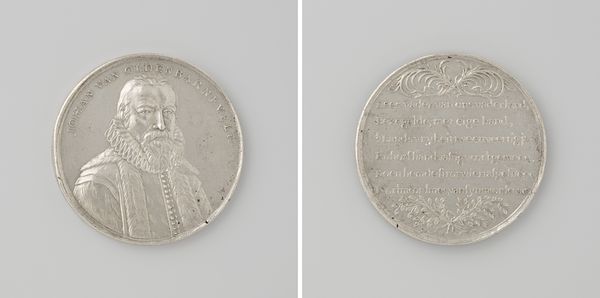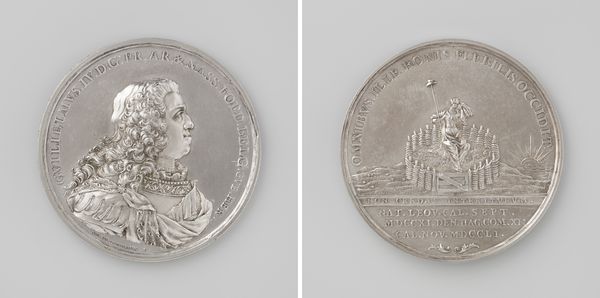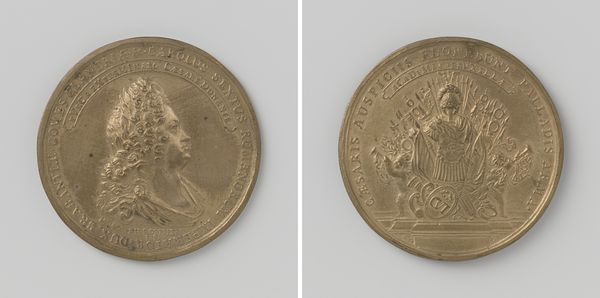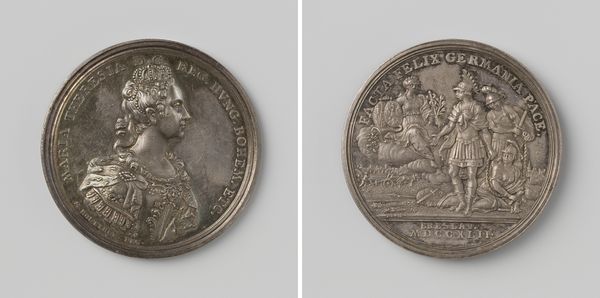
metal, relief, sculpture
#
portrait
#
medal
#
baroque
#
metal
#
relief
#
sculpture
#
history-painting
Dimensions: diameter 4.4 cm, weight 28.73 gr
Copyright: Rijks Museum: Open Domain
Editor: Here we have the "Tweede eeuwfeest van de Reformatie," or Second Centennial of the Reformation, a medal created in 1717 by Georg Wilhelm Vestner, residing here at the Rijksmuseum. It’s made of metal and the detail is pretty impressive considering the size. What strikes you about this piece? Curator: I’m immediately drawn to the labor involved. Consider the sheer skill in sculpting such detail on a small metal surface, likely through techniques like engraving or casting. The production of commemorative medals in the 18th century also speaks to a developing system of patronage and consumption. Who commissioned this medal? What social class did they belong to? Editor: That's fascinating. I hadn't considered the economic side of it. Do you think the material itself – the metal – holds significance? Curator: Absolutely. Metal, especially silver as is commonly used in medals, conveys value and permanence. Its use in commemorating the Reformation implies an enduring legacy, a desire to solidify a specific historical narrative within the material culture of the time. We need to think about the mines where the metal came from, and who controlled those resources. It really expands the story. Editor: It sounds like it connects the Reformation to economics in a physical sense, going beyond theology. I hadn't thought of it that way, focusing instead on the figures depicted. Curator: Precisely. The medal is not merely a representation; it’s a material object embedded within a web of social and economic relationships. Think about how it circulated, who owned it, and what they did with it. Editor: Looking at it this way, I now have more questions. It moves beyond the pure event of the reformation towards material impact. Curator: Exactly! By examining the material aspects, we can reveal the deeper connections between artistic creation, labor, and consumption within a specific historical context. It’s all about materiality and means of production!
Comments
No comments
Be the first to comment and join the conversation on the ultimate creative platform.
